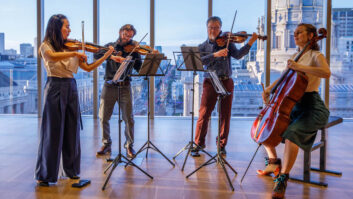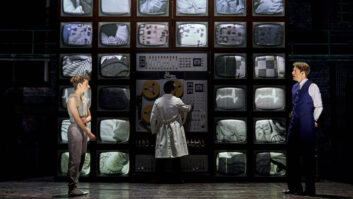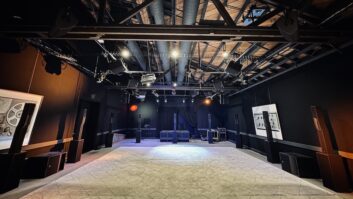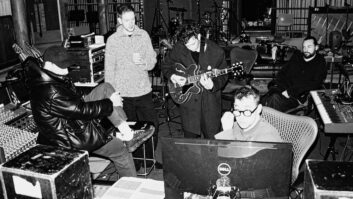New York, NY (March 31, 2017)—Anyone who’s stepped into an anechoic chamber can tell you it’s an odd experience. The rooms, designed for audio research, take sound proofing to the extreme, employing any range of sound-absorption technologies in order to create as quiet an environment as possible. The result is a room that, while ideal for audio research, can scramble your senses a bit. After all, we’re used to hearing sound and reverberation constantly; it’s part of how our brains comprehend the space around us. Some people find time spent inside these rare research facilities to be meditative, but most find it unsettling; regardless, ultimately few people ever get to experience anechoic chambers for themselves.
For the next few months, however, the public will get to experience extreme quiet inside PSAD Synthetic Desert III, a new abstract art installation at the Guggenheim Museum in New York City, running through August 2, 2017. The installation, billed as a “semi-anechoic chamber” by the museum, was first conceived by Doug Wheeler in the late 1960s. The artist’s inspiration was time spent in the desert of northern Arizona, where he experienced near-silence for extended periods, finding that the quiet altered his perception of space and distance. Aiming to replicate that feeling, Wheeler envisioned and drew multiple schematics of a room that would absorb sound and be shaped to create a sensation of infinite space around observers, dematerializing the venue around them.
Wheeler’s drawings were eventually purchased by art collector Giuseppe Panza di Biumo, whose collection in turn was acquired by the Guggenheim in 1992. The museum’s creation of the installation, based on those initial conceptual drawings, marks the first time that PSAD Synthetic Desert III has ever been physically built. A key element of Wheeler’s original drawings are dozens of pyramid-shaped sound absorbers; for the exhibit, the raw materials were provided by BASF Corporation. The company’s sales manager Doyle Robertson, suggested using Basotect, a flexible, open-cell foam made from melamine resin. First developed in 1978, Basotect consists of microscopic filaments in a three-dimensional structure, resulting in material that is highly sound absorbent and can be cut into exacting shapes due to its density. It also happens to be flame-retardant—a crucial factor for an extensive installation of sound absorbent materials in a public space. Basotect was ultimately used to create 400 four-sided pyramids and 600 wedges for PSAD Synthetic Desert III; each one had to be meticulously cut to meet the installation’s specs of sound absorption and visual congruity.
The installation now resides at the very top of the Guggenheim in its 7th floor tower. Inside the semi-anechoic chamber, the room sports pyramids and wedges on the floor, back wall and part of the ceiling. Visitors enter the space on a small ramp and platform that sit above the Basotect spires on the floor. There, observers are encouraged to stare at the opposite side of the room—a blank wall that curves to the adjoining walls and ceiling so as to suggest one is peering out at an endless void.
To minimize extraneous sounds, the museum only allows up to five visitors at a time inside the installation, where they can observe for periods of 10-15 minutes. Unsurprisingly, visitors are not allowed to touch the pyramids, and in order to maintain silence within the room, no bags or electronic items may be brought in, including phones and cameras. As a result, Pro Sound News could not use a dB meter to measure how quiet the installation was, but Robertson reported it sits around 10-15 dB.
While fully anechoic chambers can be unsettling even to those who enter them frequently for work, PSAD Synthetic Desert III is not meant to be disturbing. Although the installation effectively blots out the aural detritus of New York City in order to help visitors explore the subliminal vagaries of silence, there are occasional “suggested sounds,” according to the museum’s curators, that are piped in. Between those barely perceptible resonances, the soft, hidden lighting and the pleasingly repetitive visual of the Basotect pyramids, the exhibit allows the public to experience the intriguing side of silence without the disquiet of quietness.
BASF
www.basotect.com
PSAD Synthetic Desert III
www.guggenheim.org/dougwheeler







